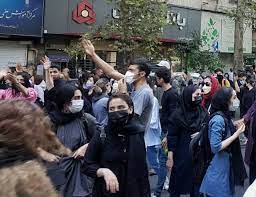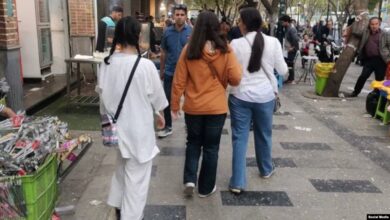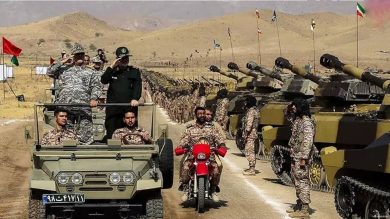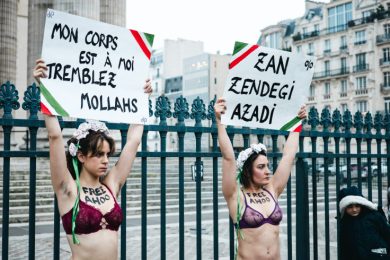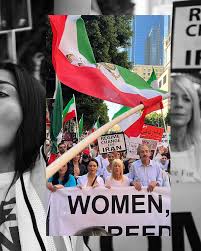“Women, Life, Freedom” — three simple words that have become the most powerful cry for justice echoing from the streets of Iran to global capitals. Sparked by the death of Mahsa Amini in 2022 after being detained by Iran’s morality police for allegedly violating hijab laws, this slogan has transcended borders and turned into a rallying cry for human rights, gender equality, and democratic change. But what do these words truly mean, and why have they become the heartbeat of Iran’s resistance?
This article unpacks the origins, evolution, and global impact of “Women, Life, Freedom”, and how this slogan encapsulates the spirit of a nation demanding dignity and transformation.
1. The Origins of “Women, Life, Freedom”
The slogan originates from the Kurdish feminist movement and was chanted in protests long before it gained prominence in Iran. The original phrase in Kurdish is “Jin, Jiyan, Azadî.” It first gained international traction through Kurdish women fighters resisting ISIS in Syria, symbolizing women’s empowerment, resilience, and sacrifice in the face of oppression.
Its adoption in Iran in 2022 marks a powerful intersection of ethnic, gender, and political struggle — and a reclamation of identity and rights.
2. Women: The Center of Iran’s Resistance
Iranian women have historically faced legal, cultural, and systemic discrimination. Under Iran’s Islamic Republic, women are:
• Legally forced to wear the hijab
• Restricted in rights related to marriage, divorce, and child custody
• Limited in career opportunities and leadership roles
• Harshly punished for acts of protest or non-compliance
Yet it is precisely this oppression that has turned Iranian women into the leading force of defiance. The word “Women” in the slogan symbolizes not just gender — but every marginalized voice demanding visibility, respect, and power.
3. Life: A Struggle for Dignity and Survival
The word “Life” represents more than survival. In a society where dissent can cost people their jobs, freedom, or lives, simply living with dignity is revolutionary.
Iranians are fighting for:
• The right to live free of fear, censorship, and state violence
• Access to economic opportunity and healthcare
• Environmental justice and basic human rights
“Life” is a demand to reclaim joy, hope, and humanity in the face of systemic dehumanization.
4. Freedom: The Universal Aspiration
Perhaps the most charged word in the slogan is “Freedom”. In the Iranian context, it represents:
• Freedom of expression: to protest, to dress as one chooses, to speak one’s mind
• Political freedom: to elect leaders, criticize power, and demand reform
• Personal freedom: over one’s body, choices, and future
Chanting “Azadi” (freedom) in the streets is a bold act of rebellion against the IRGC and the state’s security apparatus — a declaration that Iranians no longer accept life under authoritarianism.
5. The Slogan as a Unifying Force
What makes “Women, Life, Freedom” so powerful is its universality and simplicity. It transcends political factions, generations, and ethnic lines, uniting Iranians around core human values. In the slogan, women’s rights are not a niche issue — they are the foundation of broader freedom.
Protesters use the slogan:
• In graffiti on city walls
• In chants at funerals, marches, and sit-ins
• In hashtags that spread globally
It is both a chant and a manifesto, carrying the hopes of a new Iran.
6. The IRGC’s Response: Fear of Empowerment
The Islamic Revolutionary Guard Corps (IRGC) views this slogan as a threat because it embodies a grassroots movement they cannot easily control. In response, the regime has:
• Cracked down on women removing hijabs
• Arrested journalists and activists spreading the slogan
• Used surveillance and force to disrupt gatherings
• Censored online platforms where the slogan trends
Yet with each crackdown, the slogan grows louder — a sign the regime fears its meaning.
7. The Global Echo: International Solidarity
The slogan has reached far beyond Iran:
• It was chanted in protests in Berlin, Paris, London, and New York
• Celebrities and world leaders quoted it in speeches and social media
• Nobel committees, human rights orgs, and news media have spotlighted it
International support has helped keep the pressure on Iran’s regime and kept the voices of the Iranian people from being silenced.
8. Beyond a Slogan: A Vision for Iran’s Future
“Women, Life, Freedom” is no longer just a protest chant — it’s a vision for the future. One where:
• Women are free and equal under the law
• Citizens live with dignity and voice
• Iran joins the global community as a free and democratic society
It is a dream that countless Iranians have died for — and one the world cannot afford to ignore.
Conclusion: A Slogan That Changed a Nation
“Women, Life, Freedom” is a slogan born from grief, grown in resistance, and destined to define Iran’s future. It represents every mother who mourns, every girl who dreams, and every citizen who dares to hope.
Join Our Newsletter!
Stay informed with the latest updates, news, and ways to take action in the fight for justice and global security. Sign up now to get updates delivered straight to your inbox!

